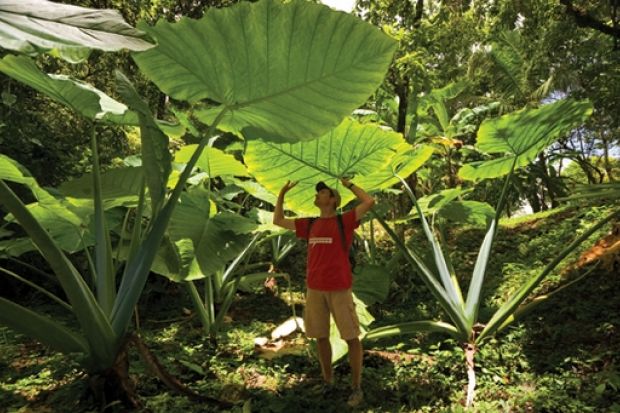"If you could convert photosynthesis into a really efficient process, the benefits for the world would be enormous."
That is the view of Janet Allen, director of research at the Biotechnology and Biological Sciences Research Council, and it is hard to disagree.
Not only would enhancing plants' ability to turn carbon dioxide into sugar result in greater crop yields, it could also allow scientists to mimic the process, creating an endless source of carbon-neutral fuel or a bottomless carbon sink.
The problem, according to Professor Allen, is that scientists have made little headway in improving the efficiency of photosynthesis despite decades of research.
Discussions with the National Science Foundation revealed that the US funder had identified the same problem, and the two organisations decided they needed to do something to give the field a leg-up.
They adopted the "sandpit" model developed by the Engineering and Physical Sciences Research Council. The NSF was familiar with the process through an earlier joint project with the EPSRC on synthetic biology.
Sandpits bring together a wide range of researchers to promote new thinking in previously intractable areas, aided by professional facilitators and academic mentors.
"It is about taking people out of their normal environment and thinking processes and getting them to ask the 'what if' questions," Professor Allen said.
A wide variety of biologists and a number of chemists, physicists and engineers were encouraged to apply to join the week-long "ideas lab".
One of the 28 participants selected by the mentors was Lee Cronin, professor of chemistry at the University of Glasgow.
He described the experience as "hugely positive", noting that the participants had brought an "unprecedented" skill set, bolstered by subtly different but complementary approaches from either side of the Atlantic, one - he declined to say which - a little more creative, the other a little more rigorous.
Stephen Long, professor of crop sciences at the University of Illinois at Urbana-Champaign, was impressed by the facilitators' ability to strip away researchers' preconceived ideas and send them "back to the drawing board to see what we could come up with as teams".
He contrasted this with previous brainstorming sessions he had joined, which had typically been dominated by "a few vociferous and successful individuals who want to lead something and have their idea already".
Over three years, £5.4 million in joint funding will be committed to the four projects that were developed. The funders were pleased that all four involved multiple groups from both the US and the UK.
Professor Allen said that as well as allowing funders to leverage their financial resources, international collaboration was also the best way to tackle some large problems, and the BBSRC would be seeking more of it in the future "where appropriate".
There is already talk about running a second joint ideas lab with the NSF in a different field. According to Mark Brodl, an NSF programme director, the US funding body is also planning a joint US-Japanese ideas lab on metabolomics.
He said he hoped to see more collaborations between US researchers and those in countries with strengths in certain fields or with whom the NSF is keen to build stronger links.
'Big issues' call for group efforts
Professor Long said "big issues" required international collaboration, but this was typically held back by the unlikelihood of both partners securing a grant from their respective funders.
He said that ideas lab-style projects should account for about 25 per cent of funders' portfolios because it was difficult to take large strides under the traditional grant system.
"Half the time, grants panels are asking investigators to have already done the test of concept. Smart investigators will already have half of a project done when they apply. They then use half of their award to get the data they need to apply for the next one. This tends to conservatism because it is really a continuation."
Professor Allen cited UK biology's pre-eminence in research metrics as evidence of the success of the current grant system, but added that the BBSRC would be looking for other areas where "a bit of a push with a small amount of money could make a big difference".
She said she was confident that some "very exciting science" would come out of the photosynthesis projects, although she admitted that it would be "quite difficult" to achieve the goal of improving the process within three years.
"Success would be new areas of science being approached, with collaborations extending beyond the period of the grant and further ideas coming forward," she said.
Professor Long said he was "pretty hopeful" that his project to improve the efficiency of photosynthesis would work.
Professor Cronin said that his aspirations to harness artificial photosynthesis as a fuel source were "so outrageous" that he was looking for a "big result" within 18 months to convince funders to put more money in.
"We will write to the BBSRC and the NSF and say: 'We've proven we might be able to save the world: how about helping us now do it?'"
